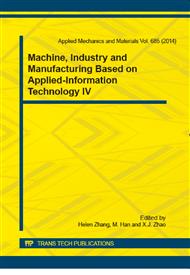p.549
p.553
p.559
p.563
p.567
p.571
p.575
p.579
p.583
Component Model Data Extraction Based on STEP in Virtual Assembly Technology
Abstract:
Component model information share is the premise of virtual assembly, but tranditional Component 3D model is not the suitable data format used on Intenet. Realization the transformation from tranditional 3D data to Web-enable data base on STEP standard is feasible. In this paper, we discuss and resolve several problems, such as: Mapping between the EXPRESS data model and the RDBMS, Lexical analysis of STEP file, the tansformation form STEP file to data-base file.
Info:
Periodical:
Pages:
567-570
Citation:
Online since:
October 2014
Authors:
Keywords:
Price:
Сopyright:
© 2014 Trans Tech Publications Ltd. All Rights Reserved
Share:
Citation:


